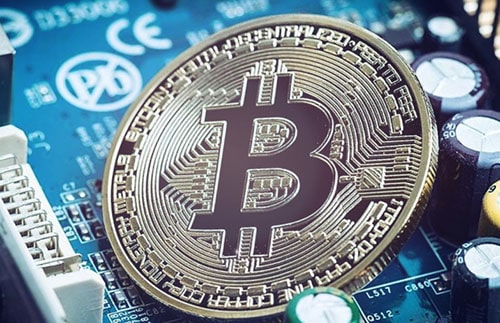Introduction: The Importance of Proper Drafting of International Contracts

Did you know that up to 70% of international deals face legal challenges already at the contract drafting stage? This is not just a statistic; it’s a daily reality for entrepreneurs entering the markets of Europe, Asia, and the CIS. One incorrect clause, an overlooked license, or a wrongly chosen jurisdiction — and the deal can turn into multimillion-dollar losses, legal battles, or even business blockage.
At
Coredo, we see companies striving for globalization often underestimate the risks associated with drafting international contracts. Meanwhile, competent legal support is not just a formality, but a foundation for scaling the business, protecting assets, and minimizing tax and regulatory risks. This is why I decided to share a practical guide based on our experience in supporting hundreds of deals in the EU, UK, Singapore, Cyprus, Estonia, Czech Republic, Slovakia, the UAE, and other jurisdictions.
If you want to not only avoid common mistakes but also gain a competitive edge through transparent, secure, and efficient international contracts, this article is for you. Here, you’ll find not just theory but also concrete steps, case studies from COREDO’s practice, and strategic recommendations to help your business confidently operate on the international stage.
International Contracts and Deal Drafting: Basic Concepts and Legal Foundations

Types of International Contracts and Agreements
International contracts form the basis of any cross-border activity. They regulate relationships between companies from different countries, establish the rights and obligations of parties, and set the procedure for dispute resolution. In COREDO’s practice, we most frequently encounter the following types of agreements:
- Sale and Purchase Agreements – for the supply of goods and services between residents of different countries.
- Licensing and Franchising Agreements, for the transfer of technologies, brands, and business models.
- Investment Agreements – for capital raising and joint projects.
- Agency and Distribution Agreements, for entering new markets through local partners.
- Joint Venture (JV) Agreements, for creating alliances and joint enterprises.
Each of these types requires a special approach to structure, wording, and drafting procedure. For instance, when registering a company in the UK or Cyprus, not only the contract itself but also accompanying documents such as the charter, memorandum of association, address confirmation, and, in some cases, licenses and regulatory approvals are critical. The COREDO team always emphasizes that there are no universal templates; every contract must be tailored to the business specifics and the requirements of the particular jurisdiction.
Main Stages of International Deal Drafting
Drafting international deals is a multi-step process that starts with partner selection and ends with the fulfillment of obligations. Our experience shows that the following stages are the most critical:
- Preliminary Negotiations and Due Diligence, counterparty check, analysis of their financial status, reputation, and regulatory compliance.
- Condition Alignment – defining the contract’s subject, price, timeline, guarantees, calculation procedure, and party responsibilities.
- Document Preparation and Para-signing – drafting the agreement, discussing it, and preliminarily signing (or para-signing) it.
- Final Signing and Entry into Force: signing the final version, sometimes involving a notary or state registration.
- Fulfillment and Support – monitoring compliance with terms, resolving arising disputes, and making amendments.
At each stage, there can be legal, tax, and regulatory risks. For example, when registering a company in the UK, it’s essential not only to properly draft founding documents but also to register with tax authorities, obtain necessary licenses, and comply with AML (Anti-Money Laundering) requirements. COREDO’s practice confirms that transparency and detailed elaboration at each stage are the keys to successful international deals.
Structure and Content of International Contracts: Key Elements

Title, Preamble, Main and Final Parts
The structure of an international contract is not merely a formality but a tool for minimizing risks and enhancing the legal strength of the document. At COREDO, we recommend adhering to the following scheme:
| Contract Element |
Description and Function |
| Title |
Name, parties, contract subject, date, and place of signing |
| Preamble |
Goals, principles, references to international law norms, and conclusions basis |
| Main Part |
Rights, obligations, execution conditions, calculation procedure, guarantees, and liability |
| Final Part |
Entry into force, termination, language, signatures, dispute resolution procedure |
| Appendices |
Protocols, rules, exchange letters, additional agreements |
For instance, when drafting a sale and purchase agreement between an EU company and an Asian partner, it’s crucial to state not just the parties but also the applicable law and the dispute resolution mechanism (arbitration, court) in the preamble. In the main part, detail the supply terms, Incoterms, timelines, payment procedures, and quality guarantees. In the final part, determine when the contract comes into force, termination conditions, and the communication language.
Specific Wording and Legal Techniques
Legal techniques for drafting international contracts require special attention to wording. Ambiguous or overly general terms can lead to disputes and litigation. At COREDO, we always recommend:
- Using clear, unambiguous terms, avoiding ambiguities.
- Specifying the applicable law and jurisdiction for dispute resolution.
- Detailing the amendment mechanism and notification procedures.
- Including confidentiality and personal data protection clauses, especially in light of GDPR and other international standards.
For example, when drafting a licensing agreement for software use between a Singapore company and a European partner, it’s essential to not only define the scope of rights but also to foresee the audit procedure, termination conditions of the license, and liability for copyright infringement.
Vienna Convention on the Law of Treaties and International Standards of Drafting

Key Provisions of the Vienna Convention
The 1969 Vienna Convention on the Law of Treaties is a fundamental document regulating the conclusion, execution, and termination of international contracts. Although originally developed for interstate relations, many of its principles apply in commercial practice, especially when resolving disputes in international arbitration.
Key provisions of the Convention to consider in drafting international deals:
- Freedom of Contract: parties have the right to determine the agreement’s terms independently, provided they do not contradict imperative norms of international law.
- Good Faith: parties must act in good faith in executing the contract.
- Conclusion Procedure: a contract is considered concluded from the moment consent is expressed to be bound by its terms.
- Contract Invalidity: a contract may be deemed invalid in cases of mistake, fraud, bribery, or coercion.
In COREDO’s practice, we often encounter situations where parties overlook these principles, leading to serious legal consequences. For example, an attempt to circumvent tax or regulatory requirements of one jurisdiction can result in a contract being deemed invalid and significant financial losses.
Procedures for Signing, Para-signing, Approval, and Ratification
The procedure for concluding international agreements can include several stages:
- Para-signing, preliminary signing of the document by the initials of authorized persons, confirming agreement with the text but not obliging execution.
- Conditional Signing, signing with a reservation for subsequent approval, like by a board of directors or a regulator.
- Final Signing, signing the final version of the document, after which it comes into effect.
- Approval and Ratification, in some cases (especially for government contracts or deals involving state-owned companies), additional approval by higher authorities or parliamentary ratification might be required.
In commercial practice, a simplified procedure usually prevails, such as exchanging signed documents through email or specialized electronic document management platforms. However, in certain jurisdictions (e.g., UK company registration or obtaining a financial license in Cyprus), the original document with a “wet” signature and sometimes an apostille or legalization is required.
Practical Aspects of Drafting Contracts in International Deals

How to Properly Draft an International Sale and Purchase Agreement
An international sale and purchase agreement is one of the most common types of contracts in COREDO’s practice. Here are the key steps we recommend for entrepreneurs:
- Identify the Parties and Contract Subject – clearly specify names, details, and describe the product or service.
- Set Price and Payment Terms: state currency, payment terms, deferral conditions, and penalties for delay.
- Define Delivery Terms (Incoterms) – choose a suitable delivery basis (FOB, CIF, EXW, etc.) to minimize risks and expenses.
- Detail Guarantees and Liability – specify warranty periods, return procedures, conditions for compensation of damages.
- Specify Applicable Law and Dispute Resolution – choose jurisdiction, arbitration, or court for possible disagreements.
For example, when handling a deal between a European equipment supplier and an Asian buyer, the COREDO team always emphasizes the necessity of a detailed description of the product’s technical specifications, acceptance conditions, and dispute resolution through international arbitration.
Documents Needed for Signing and Registration of International Agreements
Signing and registration of international agreements typically require the following documents:
- Company Foundation Documents – charter, registration certificate, registry extract.
- Powers of Attorney: confirmation of the authority of individuals signing the contract.
- Financial Statements – to confirm the counterparty’s solvency.
- Licenses and Permits – if activities require licensing (e.g., financial, pharmaceutical, telecommunications).
- Documents Confirming Compliance with AML Requirements – particularly relevant for deals involving financial institutions.
In some cases (e.g., UK company registration), additional requirements include address confirmation, business activity description, and tax authority registration. COREDO’s practice demonstrates that the absence of even one of these documents can result in delays or refusal to register the deal.
The Importance of Licenses, Permits, and Compliance with Customs/Currency Controls
Licenses and permits are crucial aspects of international deals, especially in regulated industries (finance, cryptocurrency, payment services, healthcare). For instance, providing payment services in the EU requires an EMI (Electronic Money Institution) license, and activities involving crypto-assets need registration with relevant regulatory bodies.
Additionally, international trade mandates compliance with customs and currency controls. For example, exporting goods from the EU to Asian countries requires export declaration, certificates of origin, and sometimes special permits. Violating these requirements can lead to cargo delays, fines, or even criminal liability.
The COREDO team always supports clients at all stages of obtaining licenses and permits, helping to minimize risks and accelerate market entry.
Risks and Legal Support for International Deals
Typical Errors and Risks in Drafting International Contracts
In COREDO’s practice, we regularly encounter typical mistakes entrepreneurs make when drafting international contracts:
- Insufficient Counterparty Check: Collaboration with an unreliable partner can lead to non-fulfillment and financial losses.
- Inaccurate Wording – ambiguous terms cause disputes and litigation.
- Ignoring Regulatory Requirements, lacking necessary licenses, or violating AML norms can result in account blocking, fines, or criminal charges.
- Not Considering Tax Implications, improper deal structuring can lead to double taxation or claims from tax authorities.
For instance, when supporting a business acquisition deal in the Czech Republic, the COREDO team discovered that the seller lacked necessary permits to operate, which could lead to the deal being deemed invalid and significant losses for the buyer.
Legal Proceedings and Dispute Resolution Methods
International disputes are a special category of cases requiring deep knowledge of private international law, arbitration procedures, and practice in enforcing decisions across different jurisdictions. At COREDO, we recommend pre-specifying the dispute resolution procedure in the contract, through international arbitration (e.g., ICC, LCIA, SIAC) or national courts.
Key aspects to consider:
- Choice of Arbitration Institution and Venue: influences procedure, duration, and cost of the dispute resolution.
- Language of Arbitration Proceedings – important to determine the language for negotiations and document creation.
- Enforcement of Decisions, ensure the jurisdiction is a signatory of the 1958 New York Convention on the Recognition and Enforcement of Foreign Arbitral Awards.
COREDO’s practice confirms that a well-drafted arbitration clause is an effective tool for protecting business interests in international deals.
Modern Trends and Technologies in Drafting International Contracts
Simplified Procedures: Document Exchange, Electronic Signatures, LegalTech
Modern technologies are drastically changing the approach to drafting international contracts. At COREDO, we actively utilize platforms for electronic document management, electronic signatures (e-signature), and LegalTech solutions to automate routine processes.
- Speed: A deal can be concluded within hours, even if parties are in different world parts.
- Security: contemporary systems ensure data protection and document authenticity confirmation.
- Transparency: all deal stages are recorded electronically, minimizing manipulation risks.
For example, when handling a deal between a Singapore company and an Estonian partner, the COREDO team organized contract signing via the DocuSign platform, saving parties time and avoiding the need for a physical meeting.
The Impact of Brexit and Other Geopolitical Factors on International Deals
Brexit significantly altered the rules for drafting deals between EU companies and the UK. Contract conclusions now require accounting for new customs, tax, and regulatory requirements. For example, goods delivery from the EU to the UK necessitates additional documents, customs duties, and compliance with new standards.
Additionally, geopolitical changes (sanctions, currency regulation changes, tightened AML requirements) require continuous monitoring and contractual practice adaptation. At COREDO, we constantly analyze current changes and swiftly inform clients of new risks and opportunities.
Scaling Business Abroad Using International Contracts
How to Use International Contracts to Enter New Markets
International contracts are not only a tool for one-off deals but also a foundation for business scaling. At COREDO, we help clients build long-term partnerships, create joint ventures, and open branches and subsidiaries in new jurisdictions.
- Building a Network of Reliable Partners through agency, distribution, and franchising agreements.
- Optimizing Tax and Legal Structure: considering the specifics of each jurisdiction.
- Utilizing International Trade Agreements – to reduce customs barriers and expedite market entry.
For example, when supporting a European IT company’s entry into the UAE market, the COREDO team developed a joint venture structure with a local partner, allowing the client to quickly obtain necessary licenses and commence regional operations.
Legal Support and Choosing Reliable Partners
Successful business scaling abroad is impossible without professional legal support. At COREDO, we not only assist in drafting contracts but also support clients through all stages, from due diligence to dispute resolution and business process optimization.
- Transparency, all work stages and potential risks are discussed openly.
- Individual Approach, every decision is tailored to the business specifics and client goals.
- Comprehensiveness: we support not only legal but also financial, tax, and regulatory aspects of the deal.
Key Conclusions and Practical Recommendations for Entrepreneurs
Checklist: How to Minimize Risks and Ensure Successful International Deals
| Stage |
Recommendations |
| Partner Selection |
Conduct due diligence, check reputation, financial status, and AML compliance |
| Contract Preparation |
Use clear wording, specify applicable law, dispute resolution procedure |
| Registration and Licensing |
Ensure all necessary documents, licenses, and permits are in place |
| Obligation Execution |
Monitor condition compliance, react promptly to changes |
| Support |
Engage professional consultants to minimize risks and optimize processes |
Where to Seek Support
If you plan to enter international markets, conduct complex deals, or obtain financial licenses, the COREDO team is ready to be your reliable partner. Our experience, expertise, and individualized approach will help you minimize risks, save time, and achieve your goals.
International contracts aren’t just paperwork. They’re the foundation of your global success. Entrust their drafting to professionals.
“`












































